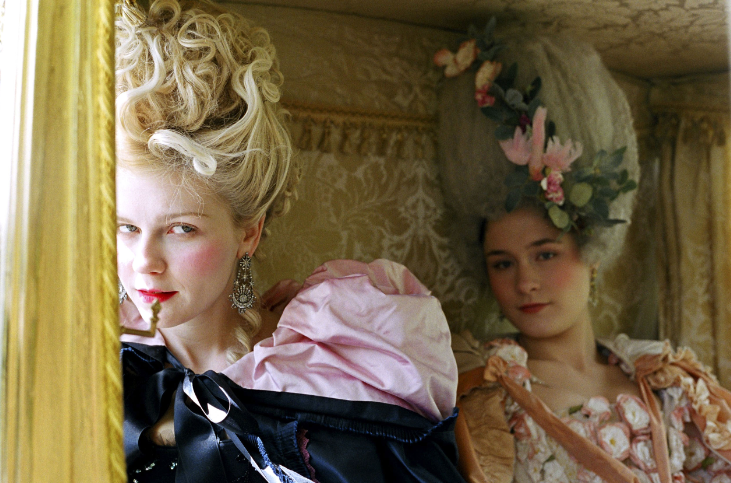Marie-Antoinette : reine, icône de style, aimant à scandales, et la femme derrière certaines des histoires les plus croustillantes de l'histoire. Au cours de cette mini-série, nous allons éplucher les couches de la légende et des faits, en explorant la vie, le style et la fascination durable de la reine la plus infâme de France. Attendez-vous à un mélange d'histoire, d'intrigues et de quelques vérités surprenantes qui changeront votre façon de voir la plus glamour - et la plus incomprise - des résidentes de Versailles.
La citation la plus célèbre jamais prononcée
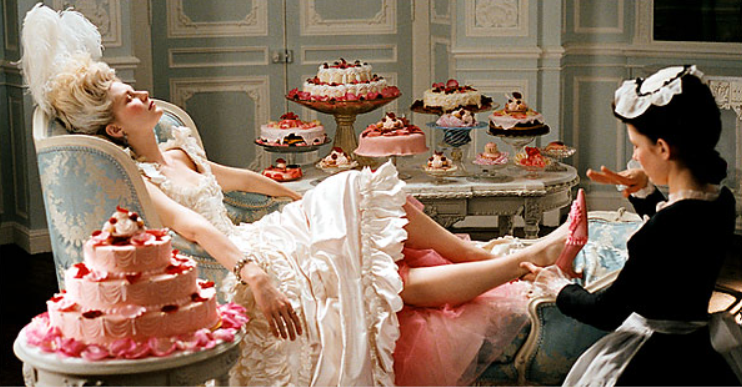
“Qu'ils mangent du gâteau !”
Cette citation évoque Marie-Antoinette dans ce qu'elle a de plus extravagant ou de plus naïf, ce qu'elle aurait dit lorsqu'on lui a dit que le peuple n'avait pas de pain. Elle dépeint une reine insouciante qui pense que les plus démunis de ce monde devraient se contenter d'un repas de moindre qualité ou qu'ils devraient étancher leur faim en mangeant des plats de fête. Elle ne semble pas se douter que si les paysans n'ont pas de pain, ils n'ont certainement pas de gâteau.
Et le pain était essentiel. Loin de surveiller leurs glucides, les gens ordinaires de l'époque tiraient plus de la moitié de leurs calories quotidiennes du pain, qu'ils brûlaient en menant une vie physiquement éprouvante.
Marie-Antoinette a-t-elle vraiment dit une chose aussi insensible, ou aussi ignorante ? La vérité est peut-être plus étrange que la fiction, comme c'est souvent le cas. En tout cas, il serait facile de le croire étant donné le contexte. En pleine famine, un noble a dit en plaisantant que les paysans devraient manger de l'herbe comme ses chevaux. Après cela, sa tête - avec de l'herbe dans la bouche - a été mise au bout d'une pique et promenée dans Paris. Un autre noble a dépensé en café et en cognac presque autant que le salaire annuel d'un serviteur, et son budget pour les billets de théâtre aurait coûté le salaire annuel total de vingt-huit serviteurs - c'est-à-dire ceux qui se nourrissent presque exclusivement de pain.
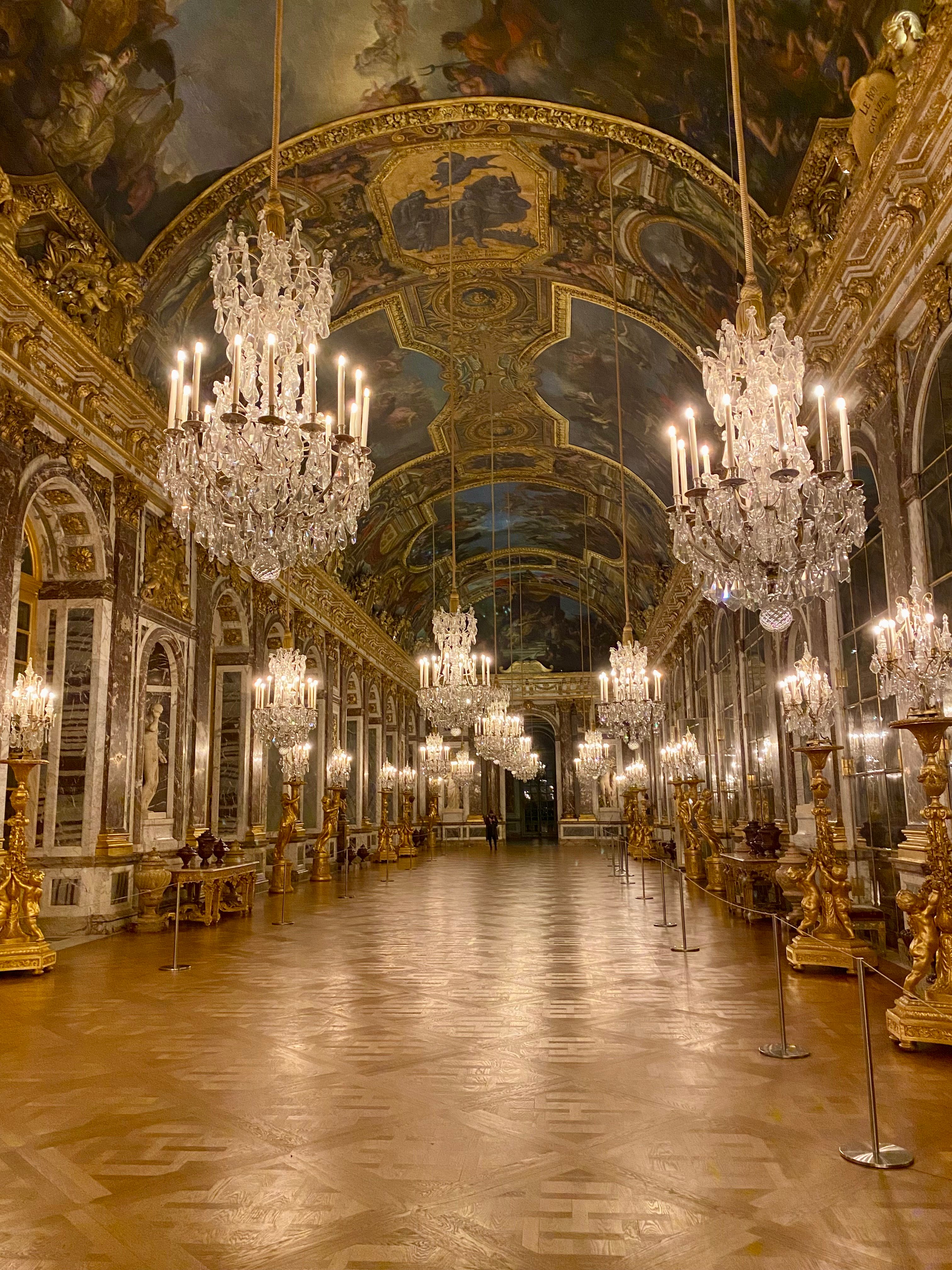
Ce monde de luxe démesuré est toujours là, à découvrir au château de Versailles. De la galerie des Glaces aux chambres royales, vous pourrez vous émerveiller devant le déferlement d'or et de dorures. Rejoignez-nous, et un Guide Mémoires France vous permettra de mettre en lumière toute cette opulence et de la rendre compréhensible pour un œil moderne.
Nous pouvons vous faire découvrir le pur enchantement des jardins royaux, où une armée d'ingénieurs hydrauliques et de jardiniers veillaient à ce que les fontaines et les fleurs soient parfaites pour toute promenade princière, ou même pour organiser un festin en plein air. Dans une telle bulle, que sauraient-ils de la table d'un paysan ?
Nous pouvons vous montrer La ferme de jeux de Marie-Antoinette, La remarque de la ministre de l'éducation, de la science et de la culture, qui a tenté de goûter à la vie des modestes gens de la campagne, pourrait également vous faire croire qu'elle a réellement fait cette remarque. Vous pouvez lire notre poste précédent et en savoir plus sur ce lieu magique. Au milieu d'un tel décor, de son village imaginaire aux l'éclat et le scintillement du palais royal, On peut alors se demander ce qu'ils pensaient des gens du peuple. La reine aurait-elle pu prononcer ces paroles fatidiques, voire fatales ?
Marie Antoinette a-t-elle vraiment dit "Laissez-les manger du gâteau" ?"

Qu'elle ait prononcé les mots ou non, il était crucial que les gens croient qu'elle les avait prononcés.
Tout le monde voulait la peau de la pauvre reine - pour certains, elle était Madame Déficit dont les dépenses ont plongé le pays dans la dette et la famine, pour d'autres, l“”Autrichienne“, un jeu de mots sur ses origines autrichiennes et la terminaison féminine du mot ”autrichienne" qui évoque un chien femelle.
La remarque sur le gâteau reflète parfaitement ce que l'on pense d'elle, résumant le fossé entre le peuple qui souffre et l'aristocratie qui n'est pas au courant.
Si l'on pouvait convaincre les gens (et ce n'était pas difficile, compte tenu des coiffures, des accoutrements et des jeux de bergère) qu'elle avait bien dit une chose aussi horrible, alors les membres de la famille royale étaient coupables d'indifférence criminelle à l'égard des souffrances du peuple et la monarchie elle-même pouvait à son tour être mise en accusation.
Mais c'était une fausse nouvelle depuis le début.
Si ce n'est pas elle, alors qui ?
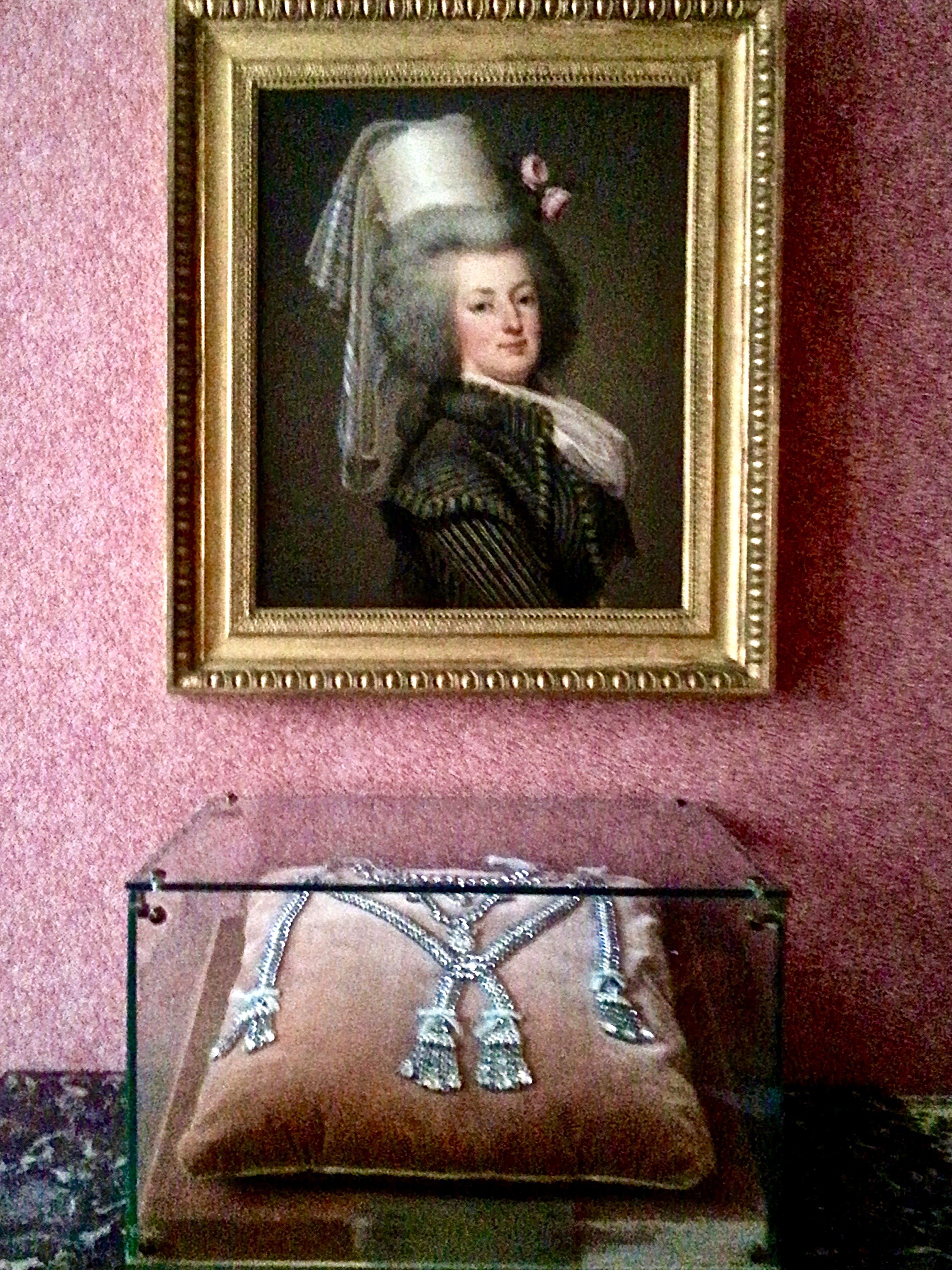
Jean-Jacques Rousseau était un philosophe à succès dont les idées étaient débattues dans les cafés, même par ceux qui ne savaient pas lire. C'est lui qui a écrit que l'homme naît libre mais se retrouve partout enchaîné, une autre boutade qui a capté l'air du temps : une vague d'indépendance et de rébellion.
Dans l'un de ses ouvrages les plus lus, il parle d'une "grande princesse" qui, lorsqu'on lui dit que les paysans n'ont pas de pain, répond : "Qu'ils mangent de la brioche", ce que nous avons longtemps traduit par “Qu'ils mangent du gâteau”.”
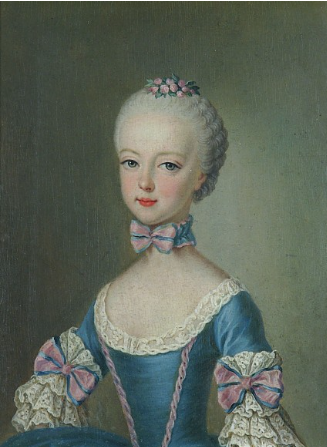
Le hic, c'est qu'à l'époque où il écrit ces lignes, en 1765, Marie-Antoinette n'est qu'une petite “Toinette’ qui joue probablement à la poupée et à la corde à sauter : une simple petite fille de dix ans qui vit en Autriche, au palais de Schönbrunn, et qui n'est même pas une ombre au tableau de la France.
Quelle que soit la “grande princesse” de Rousseau - et ce n'était certainement pas ‘Toinette - sa remarque était moins cruelle que simplement déconnectée de ce que la famine signifiait réellement et des choix qui s'offraient aux personnes qui, autrement, auraient dû manger de l'herbe - et l'ont fait.
Ainsi, alors que la reine n'aurait jamais pu la prononcer lorsqu'elle régnait en France, la phrase a été répétée par les gens qui cancanaient sur elle dans des cafés comme le Procope, si souvent et si souvent qu'elle est devenue un mot-clé pour désigner ses supposées extravagances.

D'ailleurs, puisqu'on va au fond des choses, qu'est-ce que la “brioche” ? Ce n'est pas exactement un gâteau, même si c'est une friandise, un pain enrichi de beurre et d'œufs, souvent consommé au petit déjeuner. Pour se faire une idée de ce que signifie la “grande princesse” de Rousseau, rien de tel que d'en demander au pâtissier STOHRER qui a été ouvert à Paris en 1730 par le pâtissier de la reine Marie Leszczyńska, épouse du roi Louis XV, Nicolas Stohrer. Il se trouve toujours à la même adresse aujourd'hui, 51 rue Montorgueil 75002 Paris. Cependant, toute bonne boulangerie l'aura et vous pourrez vous délecter de sa texture moelleuse et de son goût sucré. C'est un plaisir royal.
La vraie reine et son Versailles privé
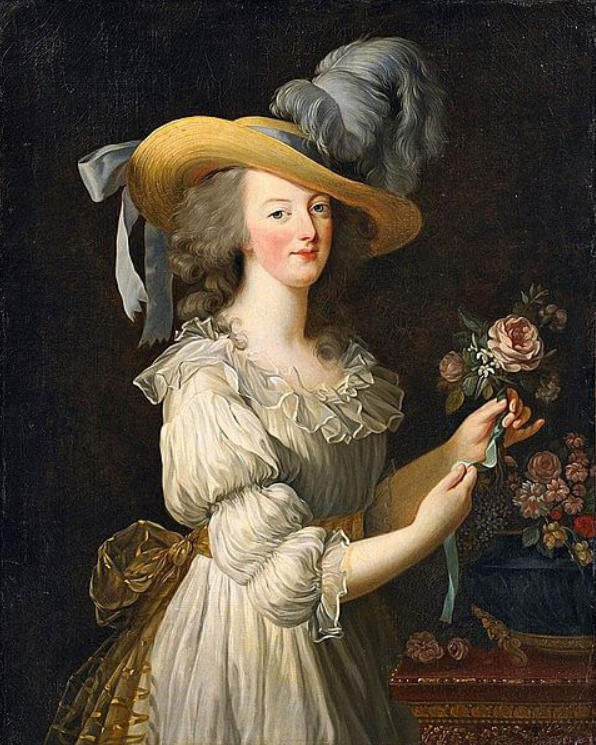
Marie-Antoinette, maintenant que nous avons établi qu'elle n'a jamais dit une telle chose, a fait beaucoup de choses qui ont fait croire au peuple, jusqu'à aujourd'hui, qu'elle l'aurait fait.
Ses dépenses en vêtements d'apparat - et de prestige - ont atteint des sommets, tout comme ses coiffures excentriques, qui ne lui ont pas permis de gagner la sympathie de l'opinion publique après une série de mauvaises récoltes et un pays endetté.
Les règles étouffantes du protocole et l'étiquette de la main de fer régissent chaque instant de ses journées, jusqu'à l'éveil et au sommeil. La tradition lui interdit même de choisir ses propres amis ou de s'habiller à sa guise.
Mais Marie-Antoinette n'en a cure. Elle s'y est opposée du mieux qu'elle a pu, son entourage, ses vêtements, ses coiffures étaient tous de son choix. Elle l'a payé cher, et pas seulement en argent.
Consciente de tous les détracteurs, elle se retire de plus en plus de la vie publique dans ses propres propriétés du domaine de Versailles, à l'abri des chuchotements et des regards désagréables, ainsi que des règles de comportement rigides qui s'imposent à une reine. Ces lieux existent toujours, malgré les siècles et les révolutions. Nous pouvons vous montrer non seulement la vie telle qu'elle était vécue sous les yeux du roi et de la cour au palais royal dans toute sa splendeur, jusqu'à la chambre à coucher où la reine a été contrainte d'accoucher au vu et au su de tout le monde.

Nous pouvons encore vous montrer son manoir du Petit Trianon. C'est là, avec quelques amis triés sur le volet, qu'elle se réfugiait pour échapper au climat oppressant de Versailles. Dans cette retraite, elle montait des pièces de théâtre ou jouait la nuit avec ses favoris, ou encore s'adonnait à des jeux plus sains avec ses enfants. Venez voir avec nous son hameau avec sa laiterie ornementale où elle pouvait jouer à la vie paysanne loin du regard plus sévère et désapprobateur des courtisans du palais.
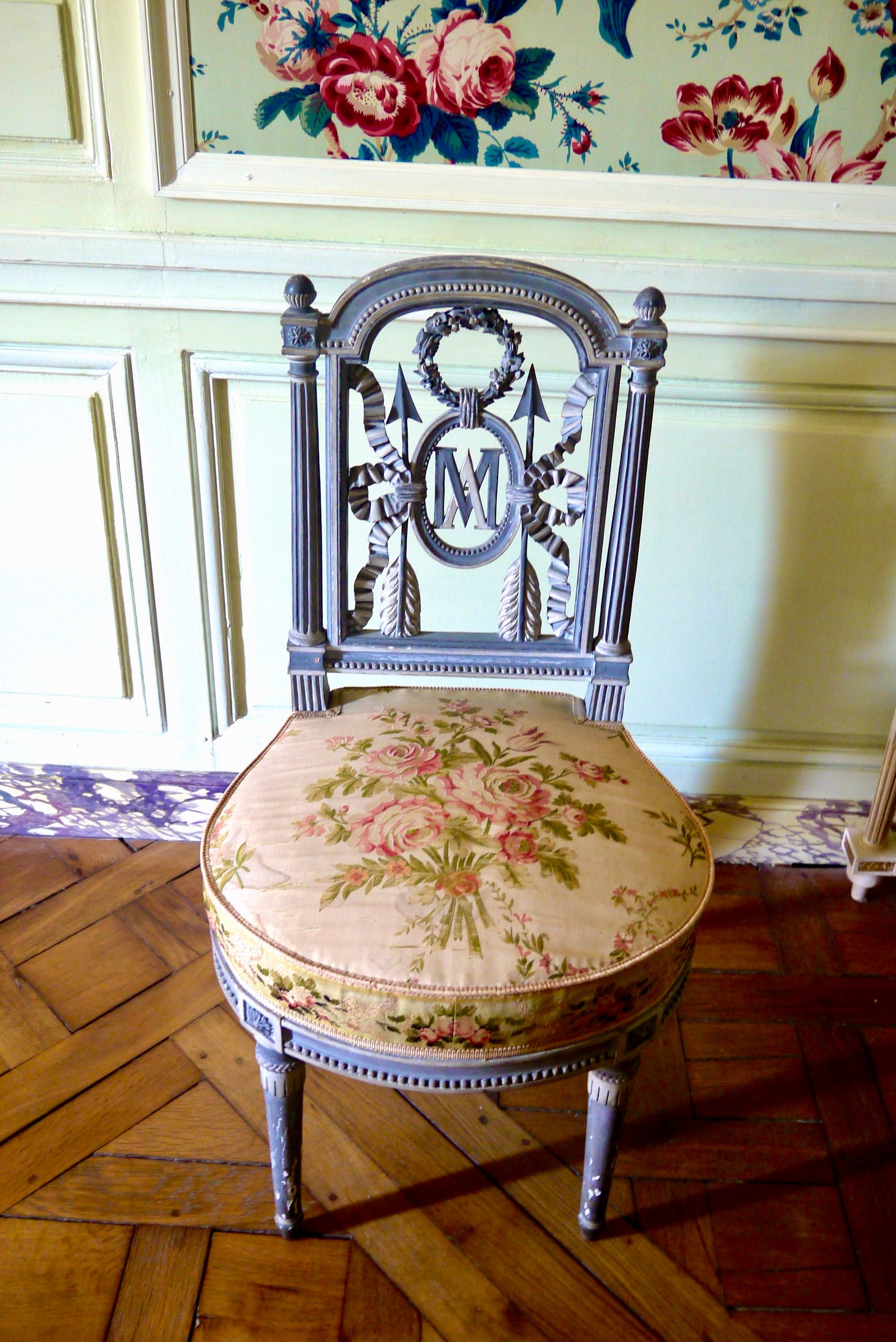
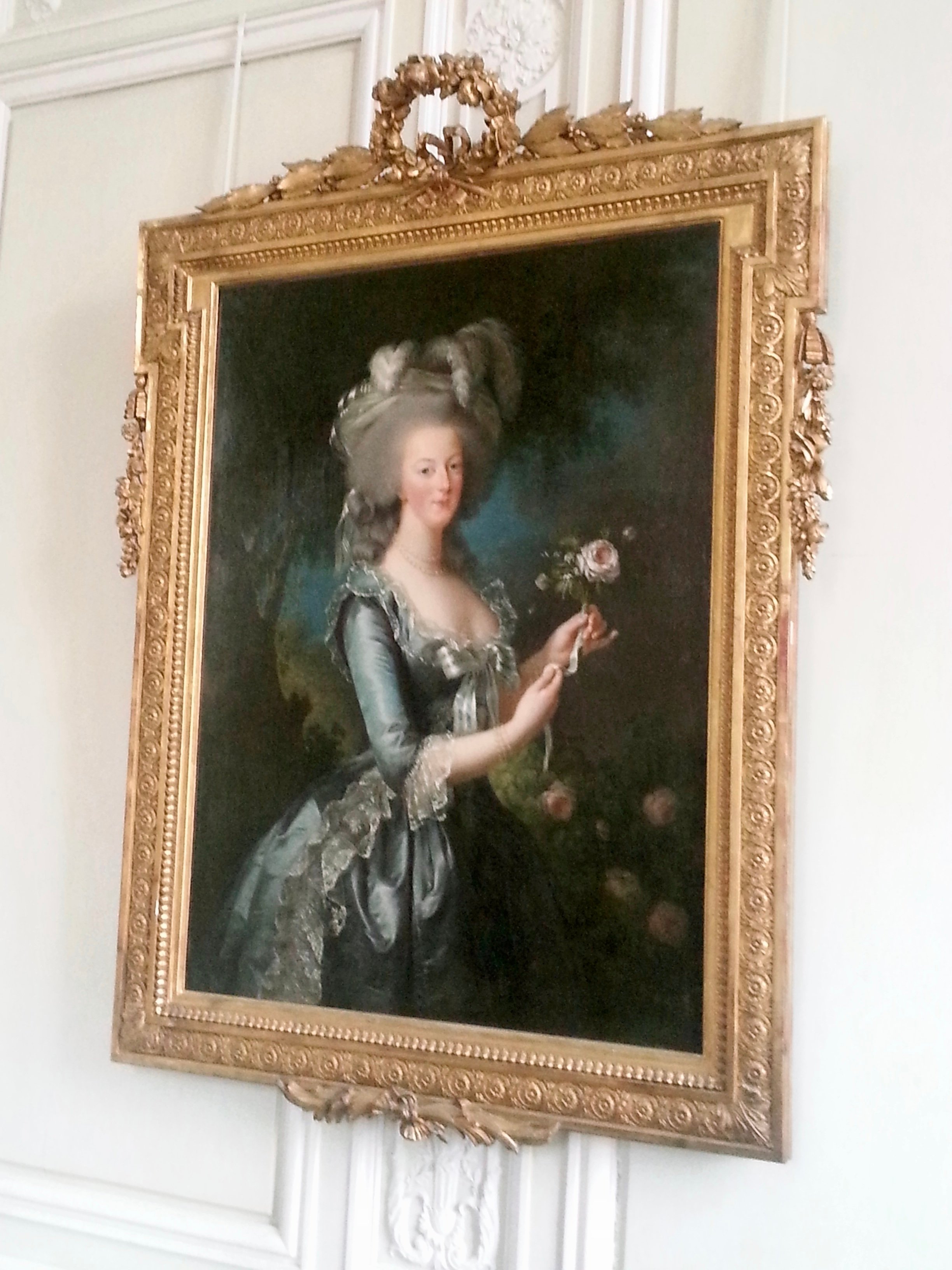
Le mot de la fin
Nous pouvons donc affirmer avec certitude que non, Marie-Antoinette n'a certainement pas dit "Laissez-les manger du gâteau"."
Il s'agissait dès le départ d'une fausse nouvelle, d'une propagande politique - une propagande puissante qui, même si Marie-Antoinette ne l'a jamais prononcée, pourrait bien lui avoir coûté la vie.
Nous aimons les mythes qui circulent encore sur cette célèbre reine, mais la véritable histoire est plus étrange et plus fascinante que n'importe quelle fiction. Venez découvrir la histoire vraie avec nous. Nous pouvons vous replonger dans l'apogée de Versailles, dans toute sa gloire et sa splendeur, et explorer les ruines qu'il a laissées dans son sillage lorsque les nobles se sont réveillés de leur monde de rêve.
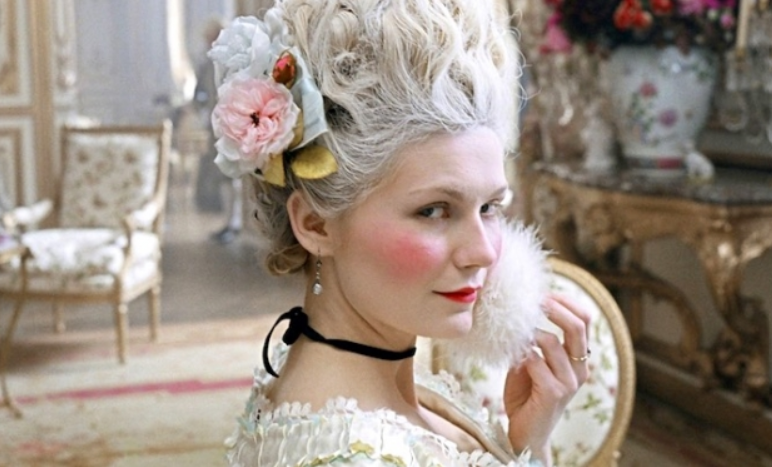
Merci de votre attention. Merci d'avoir pris le temps de lire notre blog ! Nous sommes une petite société de tourisme basée à Paris qui privilégie une expérience personnelle dans une boutique où nous pouvons partager notre passion pour notre patrimoine et notre communauté avec chaque personne qui se joint à nous. Si vous souhaitez participer à une visite guidée, rendez-vous sur notre site Web. site web pour un voyage inoubliable dans la ville lumière. En outre, consultez nos médias sociaux @memories.france pour tout savoir sur Paris : de l'utilisation du métro aux cafés les plus proches de chaque grand monument, il y en a pour tous les goûts !
Angelissa, Siobhan et la famille Memories France
Si vous êtes à la recherche de conseils, d'itinéraires et d'informations sur Paris, consultez nos médias sociaux !
Vous aimez ce que vous voyez ? Lisez nos autres blogs ici !
- Promenades secrètes de Noël à Paris : 6 quartiers magiques à explorer cet hiverParis brille à Noël - mais la vraie magie se trouve au-delà des grands boulevards. Laissez-nous vous emmener dans les quartiers authentiques de notre ville et vous montrer le côté charmant et local de Paris pendant les vacances d'hiver. Habillez-vous, laissez les touristes derrière vous et suivez-nous !
- Explorer Paris avec les enfants : traquer les envahisseurs de l'espaceLa chasse aux Space Invaders à Paris est l'une des façons les plus inattendues et les plus amusantes d'explorer la ville, surtout avec des enfants. Ces mosaïques de carreaux colorés transforment Paris en une gigantesque chasse au trésor, encourageant chacun à lever les yeux, à se promener lentement et à découvrir de surprenants éclats de street art sur les toits, les ponts et dans les coins les plus reculés. Téléchargez l'application gratuite Flash Invaders et laissez l'aventure commencer !
- Marie-Antoinette a-t-elle vraiment dit "Laissez-les manger du gâteau" ? La vérité derrière le mytheMarie-Antoinette a-t-elle vraiment prononcé les mots tristement célèbres ‘Qu'ils mangent du gâteau’ ? Dans cet article, nous séparons la réalité de la fiction et explorons comment un mythe s'est développé pour définir la réputation de la reine. Découvrez la véritable histoire derrière la légende, et pourquoi l'histoire se souvient d'elle si différemment de ce que la caricature suggère.
- Dark Paris : 10 lieux à visiter qui font froid dans le dos et qui ont une histoire réelleHalloween à Paris, ce n'est pas seulement des costumes et des bonbons, c'est aussi des siècles de récits fantomatiques et d'histoire sombre cachés derrière d'élégantes façades. Des tunnels silencieux des Catacombes aux tombes royales et aux anciens lieux d'exécution, découvrez 10 lieux effrayants qui révèlent le passé ténébreux de la Ville Lumière. Pour Halloween, osez explorer Paris comme jamais auparavant...
- Le casse du Louvre 2025 : Les bijoux de la Couronne volés et leur histoireDécouvrez le cambriolage du Louvre en octobre 2025 et les joyaux inestimables de la couronne qui ont été dérobés. Explorez les histoires fascinantes de Napoléon, Marie Amélie et d'autres membres de la famille royale française qui se cachent derrière chaque pièce, et apprenez pourquoi la Galerie d'Apollon est bien plus qu'une simple vitrine de pierres précieuses.

